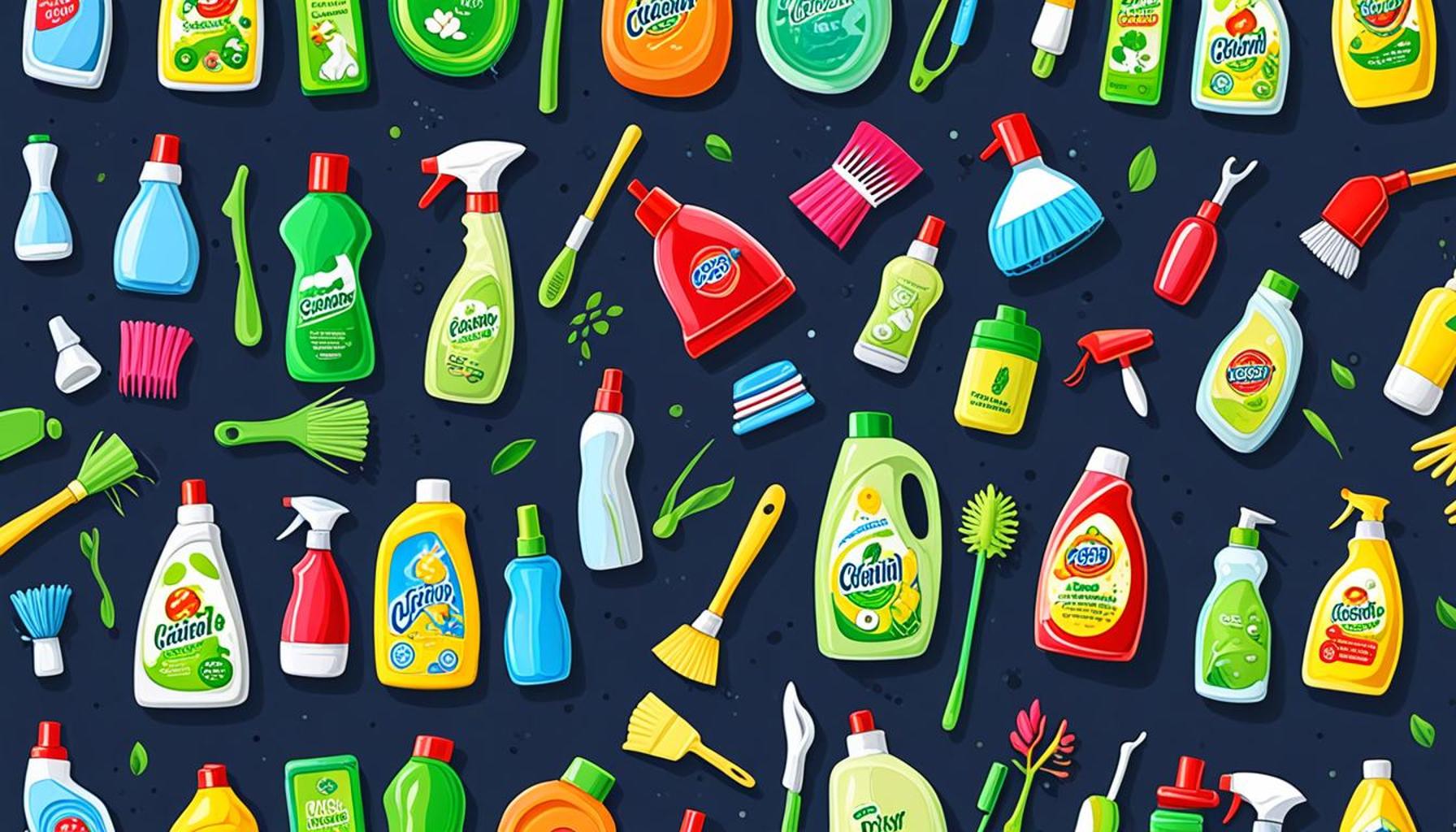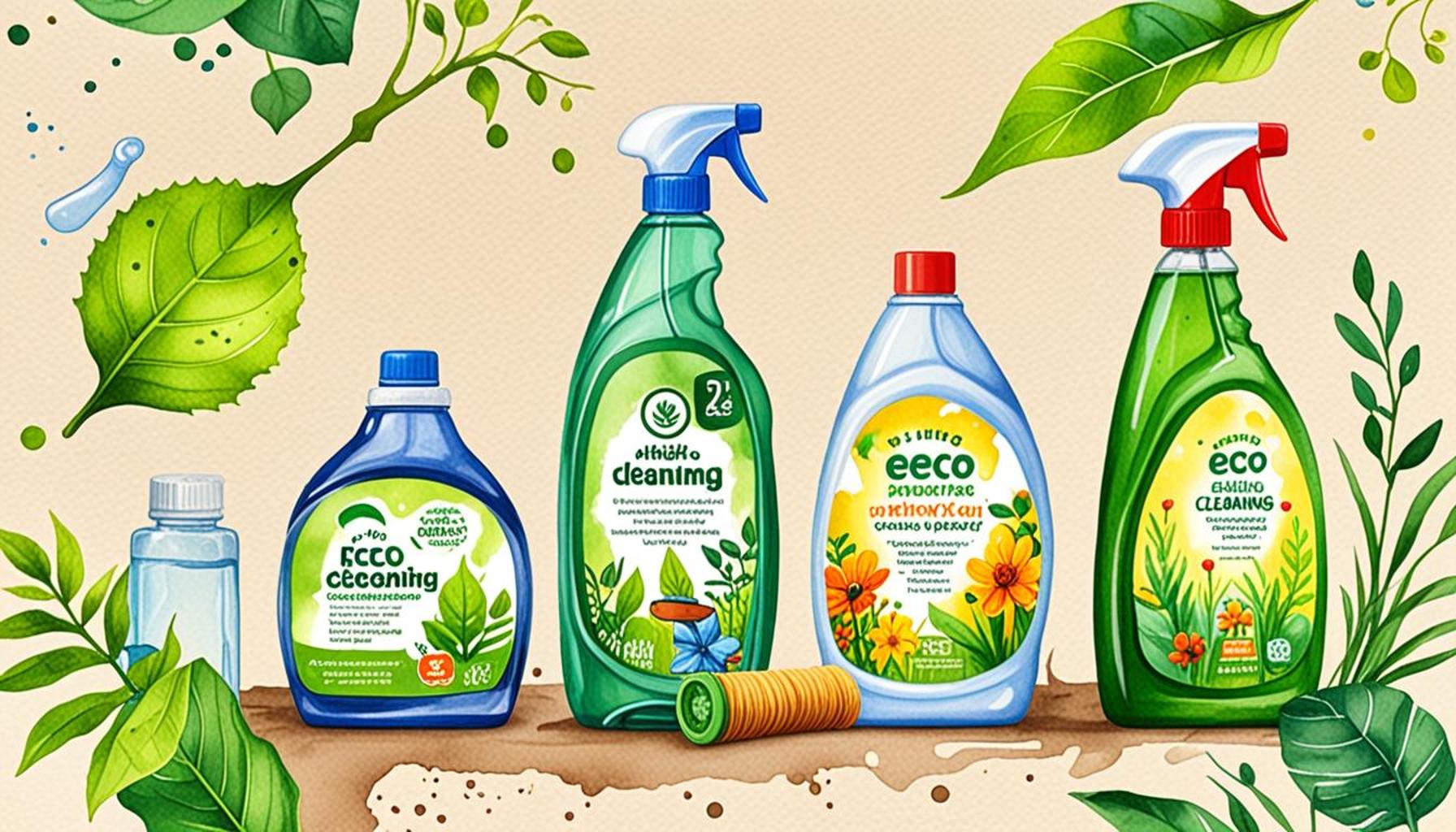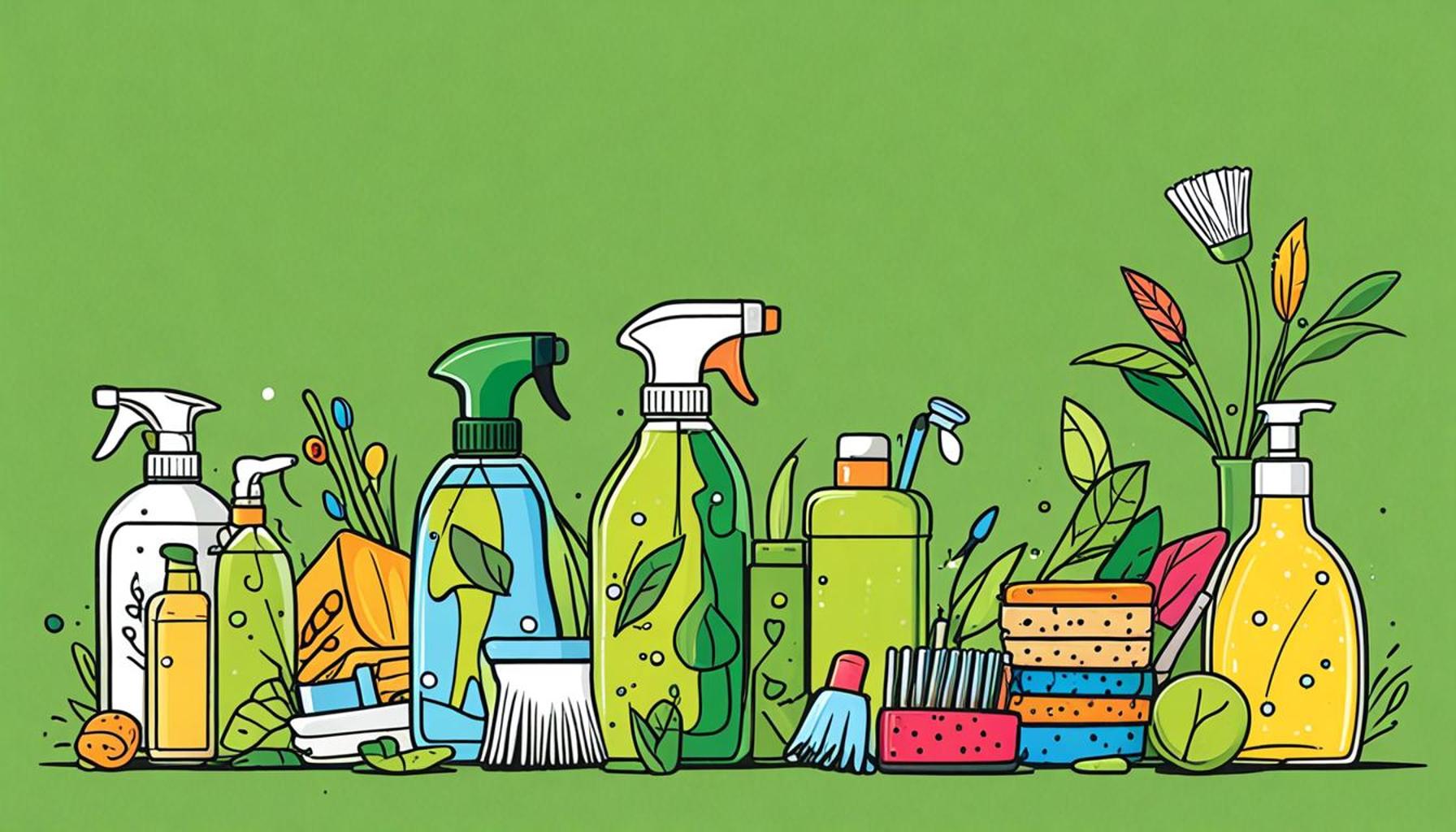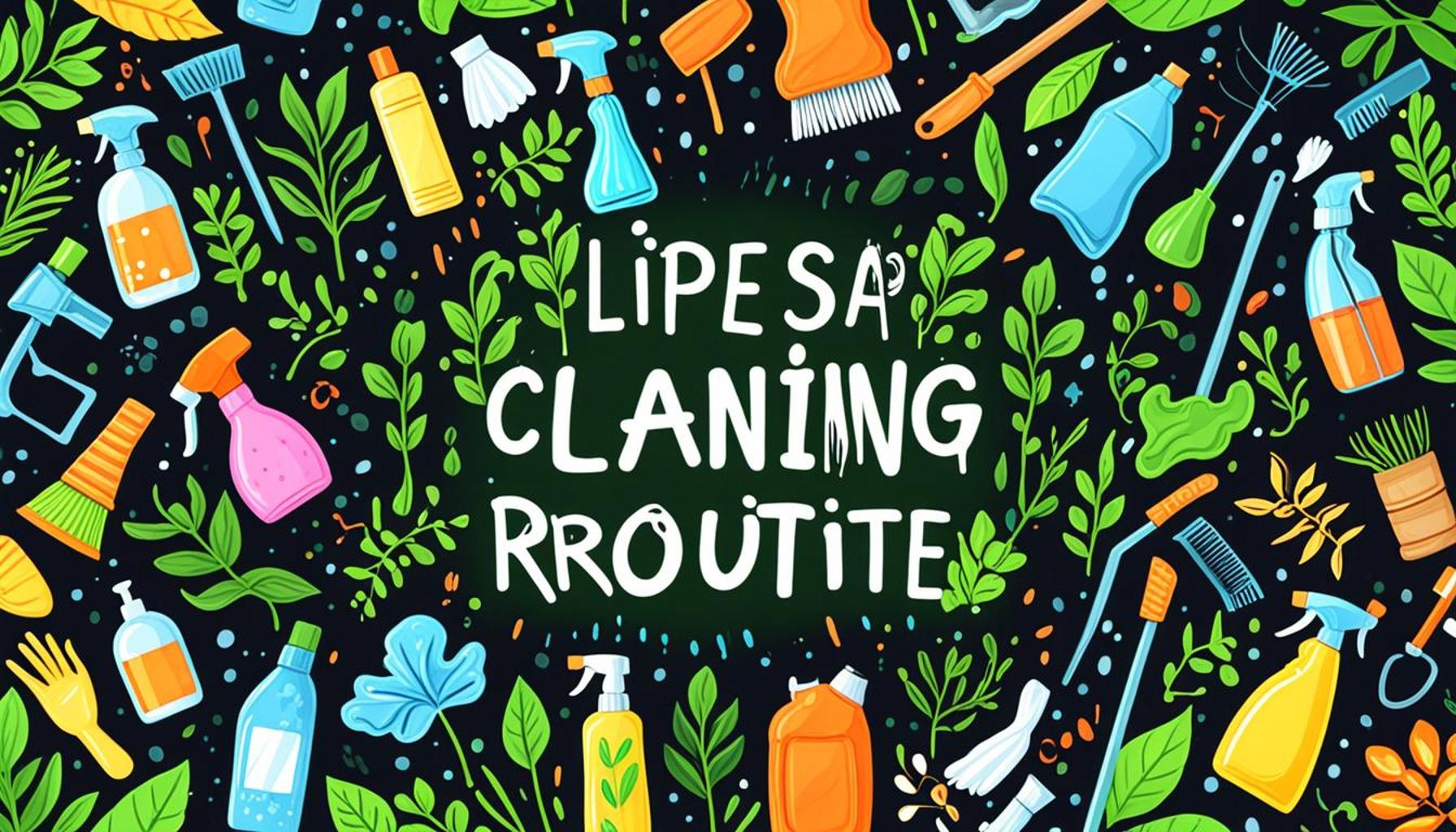Comparison between Traditional Cleaning Products and Eco-Friendly Ones: Which is the Better Option for Your Health and the Environment?

The Dilemma of Choosing Cleaning Products
As we navigate the aisles of our local supermarkets or scour the internet for cleaning supplies, the plethora of options can be daunting. Among these choices, two primary categories emerge: traditional cleaning products and eco-friendly alternatives. Both bring unique benefits and potential risks, particularly in terms of health and the environment.
Traditional Cleaning Products
Traditional cleaning solutions frequently rely on potent chemical agents designed to combat dirt and bacteria effectively. However, these products often include harsh ingredients that can compromise indoor air quality and pose health risks. For example, ammonia is a common component in glass cleaners, and while it leaves surfaces streak-free, its strong vapors can irritate the eyes and throat. Chlorine bleach, often used for disinfecting, can cause respiratory issues, especially in poorly ventilated spaces. Additionally, phthalates, which are frequently found in fragrances, have been linked to hormonal disruptions and other health concerns.
Furthermore, using multiple traditional cleaners in a home can lead to toxic chemical reactions. For instance, combining ammonia and chlorine can create chloramine vapors, which can be particularly hazardous if inhaled. This points to an essential aspect of cleaning: understanding product interactions is just as crucial as knowing what they contain.
Eco-Friendly Alternatives
In contrast, eco-friendly cleaning products champion less harmful ingredients derived from natural sources. These solutions typically feature biodegradable components that break down safely in the environment, significantly reducing pollution. Their non-toxic formulations make them safer for households with children and pets, alleviating concerns over accidental ingestion or inhalation of harsh chemicals.
Many eco-friendly cleaners utilize essential oils or plant extracts like vinegar, baking soda, and lemon juice to provide effective cleaning without the toxic side effects. For instance, vinegar can work wonders as a natural disinfectant and deodorizer, while baking soda can act as a gentle abrasive for scrubbing tough stains. These alternatives not only promote a healthier home space but also contribute to a lower carbon footprint.
Making Informed Choices
With rising awareness around sustainability and health, consumers are increasingly questioning which cleaning option is superior. It’s vital to consider not only the immediate benefits of cleanliness but also the long-term implications for both health and the environment. Are the potential health risks associated with traditional chemicals worth the trade-off for their immediate efficacy? Or are the long-term benefits of eco-friendly alternatives more appealing even if they may sometimes require a bit more effort or time to achieve the same level of cleanliness?
As we enhance our understanding of these cleaning choices, we empower ourselves to make more informed decisions for our homes, families, and the planet. Ultimately, whether opting for traditional or eco-friendly products, the key lies in choosing wisely and understanding what is best for our specific needs—and the world we share.
DISCOVER MORE: Click here to dive into our seasonal cleaning checklists
Examining Health Impacts of Cleaning Products
When it comes to cleaning our homes, the choice between traditional and eco-friendly products goes beyond mere preferences; it significantly impacts our health and well-being. Traditional cleaning products can present a range of health hazards due to their chemical compositions. The Centers for Disease Control and Prevention (CDC) reports that exposure to certain household cleaning agents can lead to acute health issues, including skin irritations, respiratory problems, and even long-term damage to organs. The immediate allergens and irritants in these products, such as phosphates and petroleum distillates, can provoke allergic reactions and aggravate existing health conditions like asthma.
In contrast, eco-friendly cleaning products are typically free from many of the harsh chemicals found in traditional cleaners. They avoid the use of volatile organic compounds (VOCs), which can evaporate at room temperature and contribute to air pollution as well as indoor air quality degradation. According to a study conducted by the Environmental Protection Agency (EPA), poor indoor air quality can be linked to a range of health issues, from headaches to chronic respiratory illnesses. By using eco-friendly options, households can reduce their exposure to harmful air pollutants and therefore, enhance their indoor environment.
The Environmental Footprint
The impact of cleaning products stretches beyond personal health; it extends to the environment as well. Traditional cleaning products often contribute to water pollution. The toxic chemicals they contain can enter waterways after use, harming aquatic life and disrupting ecosystems. For instance, when products containing chlorinated compounds wash down the drain, they can form harmful byproducts that affect marine habitats and drinking water supplies.
On the other hand, eco-friendly cleaners are formulated to be biodegradable and less harmful to aquatic environments. Their natural ingredients decompose more easily and are less likely to accumulate in the ecosystem. Moreover, many eco-friendly brands prioritize sustainable practices, often relying on recyclable packaging and minimizing their carbon footprint during production.
Key Factors to Consider
When deciding between traditional and eco-friendly cleaning products, consider the following factors:
- Health Risks: Evaluate any allergies or sensitivities within your household.
- Environmental Impact: Consider the biodiversity in your local area and the potential harm to ecosystems.
- Product Efficiency: How well do the products perform in your specific cleaning tasks?
- Cost: Analyze the price differences and long-term savings from using eco-friendly products.
This complex interplay between health and environmental effects urges consumers to think critically about their cleaning choices. By understanding these implications, individuals can make more informed decisions that promote a healthier home and a sustainable planet.
| Traditional Cleaning Products | Eco-Friendly Cleaning Products |
|---|---|
| Fast and Effective | Safe for Sensitive Groups |
| Traditional cleaning products often boast rapid cleaning capabilities, using powerful chemicals to eliminate dirt and grime quickly, making them appealing for immediate results. | Eco-friendly options utilize natural ingredients that pose less risk to children, pets, and individuals with allergies, which is crucial for maintaining a healthy indoor environment. |
| Widespread Availability | Biodegradable Ingredients |
| These products can be found in most supermarkets, with a wide range of options catering to various cleaning needs, thus making them convenient for consumers. | Eco-friendly cleaning solutions are formulated using biodegradable ingredients that break down in the environment, minimizing ecological impact and promoting sustainable living. |
From the characteristics outlined in the table, it becomes apparent that the choice between traditional and eco-friendly cleaning products involves a careful evaluation of personal priorities. Traditional options satisfy immediate cleaning demands but may pose risks to health and the environment due to their chemical compositions. On the other hand, eco-friendly alternatives, while slower to act in some cases, prioritize long-term health benefits, and they align with the growing demand for sustainable practices. As consumers become more aware of their choices, understanding these differences can fundamentally shape how we interact with cleaning products and their implications for our health and that of the planet. Exploring this question further leads to intriguing discussions on the need for balance between effectiveness and safety.
DISCOVER MORE: Click here for tips on creating an effective cleaning schedule
Consumer Awareness and Transparency
As consumers become increasingly concerned about their health and the health of the planet, transparency in product ingredients has emerged as a pivotal factor in decision-making. Traditional cleaning products often come with lengthy labels, filled with complex chemical terms that can be daunting for the average person to understand. Many of these products do not fully disclose their contents, leaving consumers unaware of the potential risks associated with prolonged exposure to hazardous chemicals.
On the flip side, the rise of eco-friendly cleaning products has been accompanied by a movement toward greater transparency. Many reputable eco-friendly brands provide clear information about their ingredients and their sourcing. A better understanding of natural compounds such as citrus extracts, vinegar, and baking soda not only enhances consumer confidence but also fosters a culture of informed choices. This shift emphasizes the importance of conscious consumerism, where buyers are not just passive recipients of products but active participants in seeking out options that align with their values regarding health and the environment.
Effectiveness and Performance
A common concern for consumers contemplating a switch to eco-friendly cleaning alternatives is the perceived effectiveness of these products. Individuals often question whether they can achieve comparable cleaning results without the harsh chemicals found in traditional cleaners. Notably, many eco-friendly cleaning products have made substantial advancements in formulation, allowing for competitive cleaning power. According to a survey by the Green Seal certification organization, numerous eco-friendly products have been proven to perform effectively in killing germs and bacteria, similar to their conventional counterparts.
Moreover, utilizing eco-friendly options can enhance the overall cleaning experience. Traditional cleaning products often leave behind strong chemical residues and unpleasant odors, while eco-friendly cleaners provide a fresher, natural scent derived from essential oils, which can promote a more pleasant indoor atmosphere. This aspect not only appeals to consumers but also underscores the idea that safe cleaning does not need to compromise efficacy.
The Financial Aspect
While the initial cost of some eco-friendly products may be higher than that of traditional ones, considering the long-term financial implications is essential. Eco-friendly cleaning solutions often come in concentrated forms that require smaller quantities for effective use. This means that a single bottle may last longer than its traditional counterpart, resulting in savings over time. Additionally, the avoidance of potential health issues associated with traditional cleaners may lead to reduced medical expenses in the long run.
Moreover, as consumer demand for eco-friendly products rises, many companies are responding by increasing competition and reducing prices. Buyers can now find affordable eco-friendly choices across various brands, making the switch increasingly feasible for anyone concerned about their health and the environment. Various local retailers and online platforms also offer discounts and green product bundles, further enhancing accessibility.
The decision between traditional and eco-friendly cleaning products is shaped by an intricate blend of performance, health, environmental, and financial considerations. With ongoing developments in product formulations and ingredient transparency, consumers are empowered to choose the best options that resonate with their needs and ethical values.
DISCOVER MORE: Click here for essential cleaning tips
Final Thoughts
In conclusion, the ongoing debate between traditional cleaning products and their eco-friendly counterparts is more than just a matter of preference—it holds significant implications for our health and the environment. As highlighted throughout this discussion, traditional cleaners often contain harmful chemicals that can pose risks not just to users but also to surrounding ecosystems upon disposal. Conversely, eco-friendly products, composed of natural ingredients, offer an alternative that prioritizes both personal health and environmental integrity.
Consumer awareness and transparency have become key factors driving the shift towards eco-friendly options. With increased availability of information regarding ingredients and their sources, shoppers are now more empowered to make informed decisions that align with their values. Furthermore, advancements in eco-friendly formulations have proven their ability to deliver comparable cleaning efficacy, addressing a common concern that hinders many from making the switch.
While the initial cost of eco-friendly cleaning products may deter some consumers, it is essential to consider long-term benefits, not just in terms of financial savings but also in health and environmental impacts. As demand increases, the availability and affordability of these products are likely to improve, making green cleaning accessible to all.
Ultimately, the choice between traditional and eco-friendly cleaning products is a reflection of one’s priorities. By embracing eco-friendly alternatives, consumers can champion a future that values sustainability and safety, paving the way for healthier homes and a cleaner planet. The journey toward conscious consumerism starts with small, informed choices—such as the cleaners we choose to use every day.


